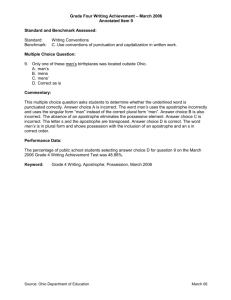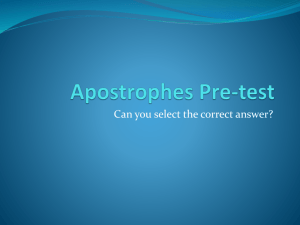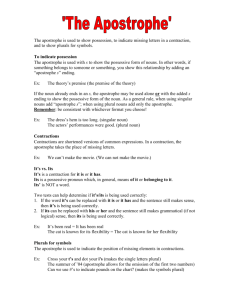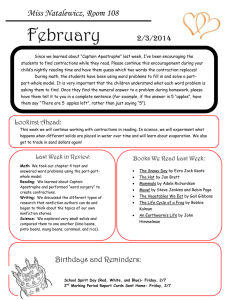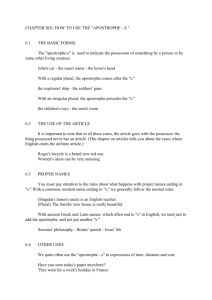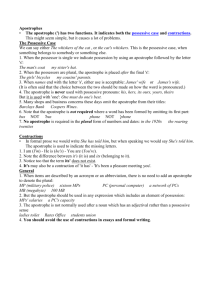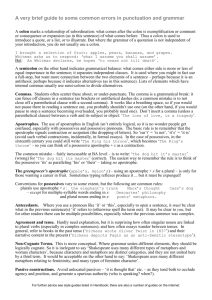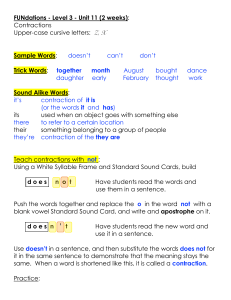Writing Tip of the Week Correct Use of the Apostrophe—Part 2
advertisement
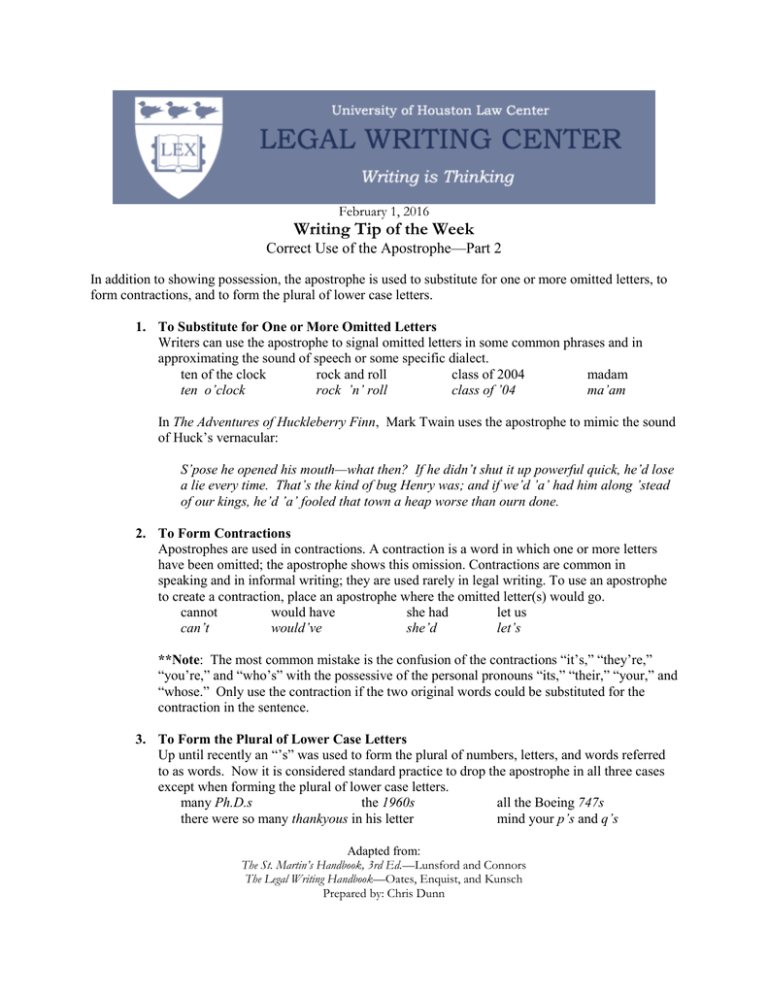
February 1, 2016 Writing Tip of the Week Correct Use of the Apostrophe—Part 2 In addition to showing possession, the apostrophe is used to substitute for one or more omitted letters, to form contractions, and to form the plural of lower case letters. 1. To Substitute for One or More Omitted Letters Writers can use the apostrophe to signal omitted letters in some common phrases and in approximating the sound of speech or some specific dialect. ten of the clock rock and roll class of 2004 madam ten o’clock rock ’n’ roll class of ’04 ma’am In The Adventures of Huckleberry Finn, Mark Twain uses the apostrophe to mimic the sound of Huck’s vernacular: S’pose he opened his mouth—what then? If he didn’t shut it up powerful quick, he’d lose a lie every time. That’s the kind of bug Henry was; and if we’d ’a’ had him along ’stead of our kings, he’d ’a’ fooled that town a heap worse than ourn done. 2. To Form Contractions Apostrophes are used in contractions. A contraction is a word in which one or more letters have been omitted; the apostrophe shows this omission. Contractions are common in speaking and in informal writing; they are used rarely in legal writing. To use an apostrophe to create a contraction, place an apostrophe where the omitted letter(s) would go. cannot would have she had let us can’t would’ve she’d let’s **Note: The most common mistake is the confusion of the contractions “it’s,” “they’re,” “you’re,” and “who’s” with the possessive of the personal pronouns “its,” “their,” “your,” and “whose.” Only use the contraction if the two original words could be substituted for the contraction in the sentence. 3. To Form the Plural of Lower Case Letters Up until recently an “’s” was used to form the plural of numbers, letters, and words referred to as words. Now it is considered standard practice to drop the apostrophe in all three cases except when forming the plural of lower case letters. many Ph.D.s the 1960s all the Boeing 747s there were so many thankyous in his letter mind your p’s and q’s Adapted from: The St. Martin’s Handbook, 3rd Ed.—Lunsford and Connors The Legal Writing Handbook—Oates, Enquist, and Kunsch Prepared by: Chris Dunn

